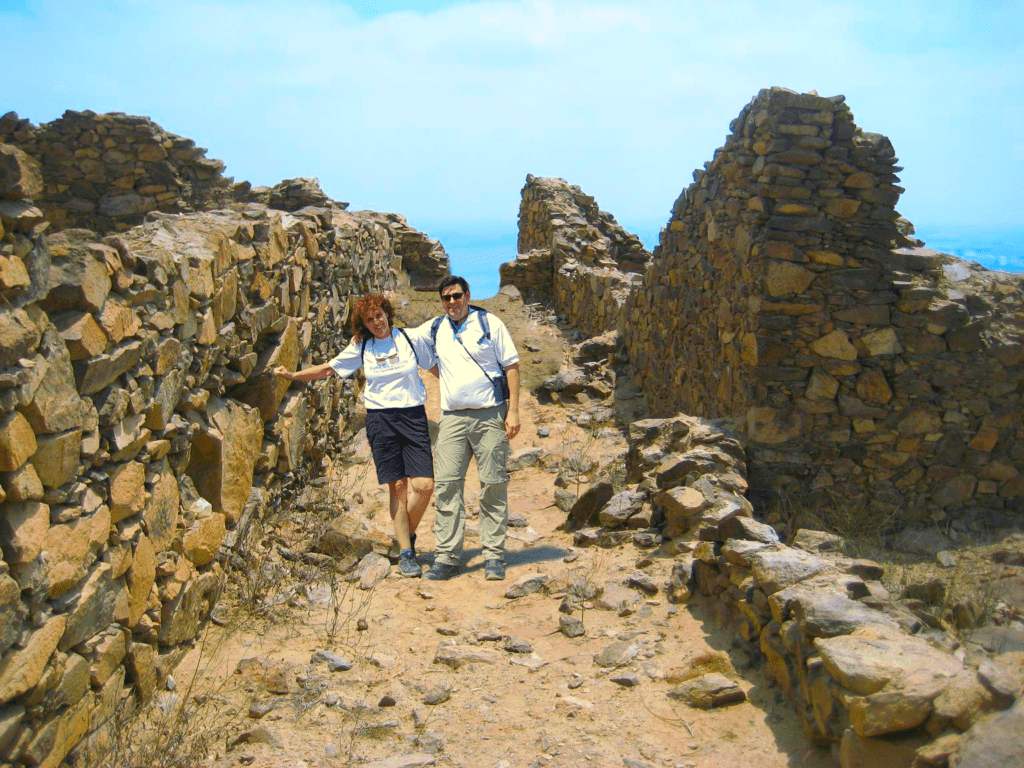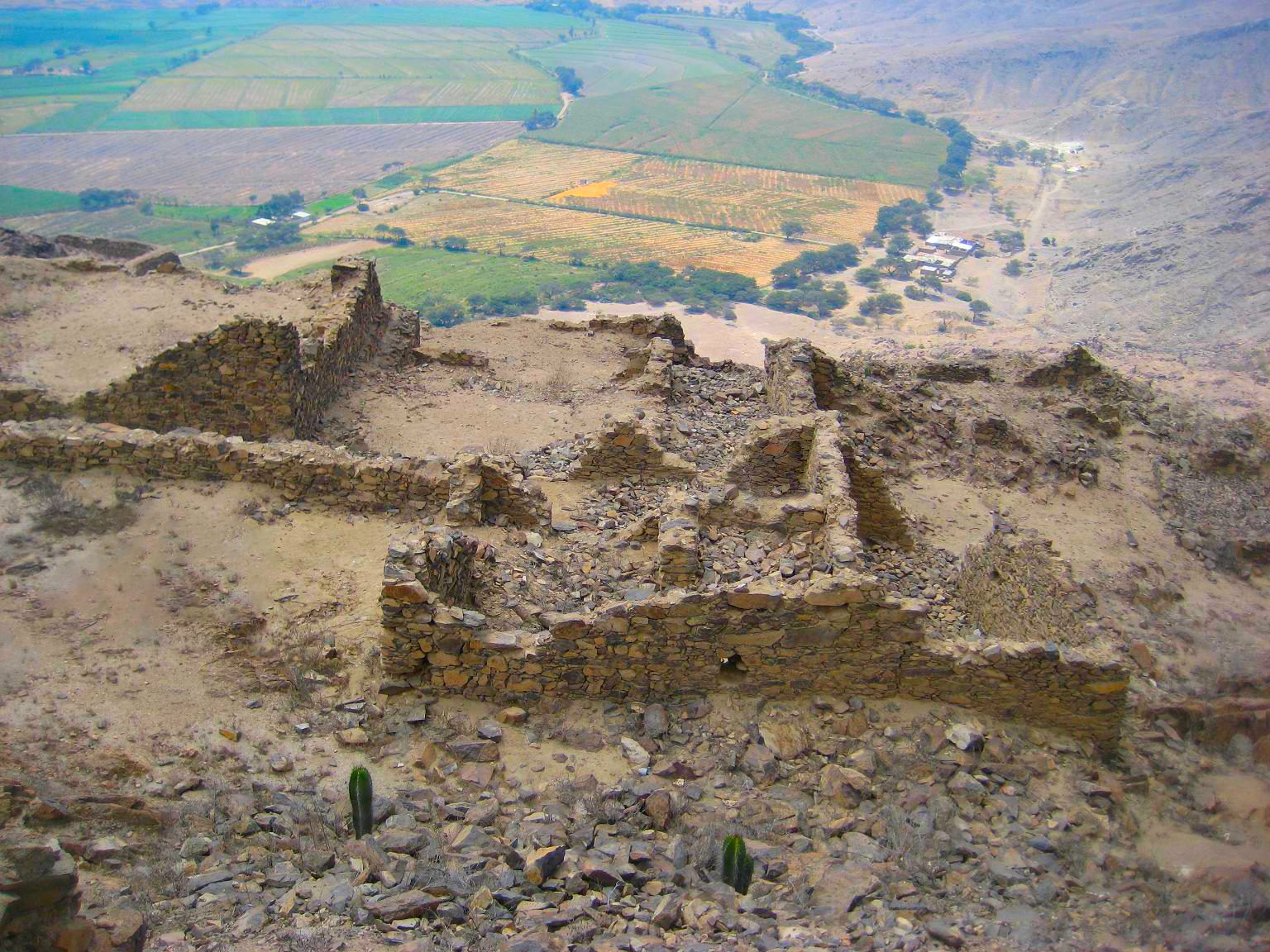
Chepén Cultural Heritage
On July 22, 2007, Coslachec, archaeological site of Chepen in the department of La Libertad, Peru, was declared Cultural Heritage of the Nation. Archaeological studies conducted in 2003 and 2004 indicate that it was built and inhabited during the late Moche period.
Location


It is located in the high and eastern part of the Chepén mountain, the site rises in the center of a great alluvial cone formed by the approach to the sea of the Jequetepeque and San Gregorio rivers. From that favorite place, the ancient inhabitants of the region exercised visual control of the neuralgic points of the lower valley, which include: the entire extension of agricultural lands from the course of the Jequetepeque River to the north, the “necks” of the valleys of the Chamán River and the Jequetepeque River, dry flower slopes that surround the greatest concentration of fertile land in the alluvium.
The location also gave them the added advantage of having direct access to high yielding agricultural land that had previously been irrigated with water from the Serrano and Chepén canals. The site itself is only 3.5 km south of the current course of the San Gregorio River, although it “dries up” during the winter months, there are many persistent pockets of groundwater associated with it.
Features
- Typical Late Mochica settlement in the Jequetepeque Valley: this conforms to the late Moche settlement pattern discovered by Dillehay (2001). It is a large nuclear urbanization (approximately 40 hectares), fortified and differs from other modern settlements by its privileged location, scale of defenses and monumentality of internal structures.
- The magnitude of the defensive works of the site: it consists of two sectors delimited by a perimeter wall.
- The first sector, called Monumental, is located in the highest part of the hill. It occupies about a quarter (9.7 hectares) of the total area of the site and is shaped like an elongated wedge. The walls that protect this site are all made of stone extracted from the same hill. The wall has a continuous length of 1,717 m, an average thickness of 2.5 m at the top and reaches a height of 5.5 m in some sections.
The design of the wall follows a solid defensive plan, with only three heavily guarded accesses, a total of 11 towers, distributed mainly in the eastern section, and containing up to 11 small rock blocks. This wall is the largest defensive structure in the region and can only be compared to the outer walls of the city of Pakatnamu during the Chimú period.
- The second sector, bordering the second wall, extends over the eastern slopes of the hill to the east of the great defensive wall. It consists of small terraces that are interpreted as dwellings of the common people. The perimeter wall that protects the sector of low houses is of smaller height and thickness than the previously mentioned. There are no towers and rocks. The parts built on or near the plain used clay and stone in their construction.
- The first sector, called Monumental, is located in the highest part of the hill. It occupies about a quarter (9.7 hectares) of the total area of the site and is shaped like an elongated wedge. The walls that protect this site are all made of stone extracted from the same hill. The wall has a continuous length of 1,717 m, an average thickness of 2.5 m at the top and reaches a height of 5.5 m in some sections.
- The monumentality of its buildings: There are nine large buildings and smaller isolated architectural units. In the first, four buildings stand out in order of priority in the monumental sector:
- They were built on top of a hill, which means that its inhabitants visually controlled the whole area.
- The center of the monumental sector was built. In defense, these buildings have the best defensive position. Its inhabitants had privileges that the common inhabitants of the hill did not have.
- They are the only ones that introduce galleries in their architectural design, sometimes in surrounding quadrangular terraces, sometimes adjacent. Some galleries have plugs to indicate the presence of a second floor.
- The type of architecture is alien to the coastal building tradition of the time and, on the contrary, typical of the high Andean tradition. Some authors refer to this architectural model as the “Cortes Group” and consider it characteristic of the Huari architectural tradition that prevailed in the Peruvian highlands in the VIII and IX centuries.
- The four central buildings of the Monumental Sector provide architectural evidence indicating the presence of highlanders in the lower Jequetepeque valley, with the discovery of many artifacts related to late Moche style domestic pottery and fine Cajamarca Cursivo floral style pottery.
- Radiocarbon dating indicates that the occupation of the Chepén hill ended at the end of the late Moche period, which allows us to outline a model of the political collapse of the local communities in the Jequetepeque Valley.



Es un gran contenido, de chepen